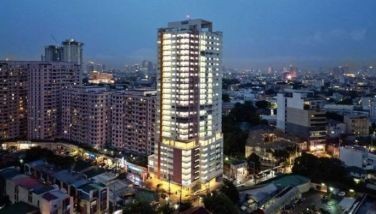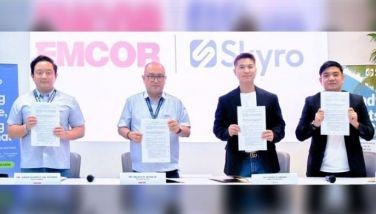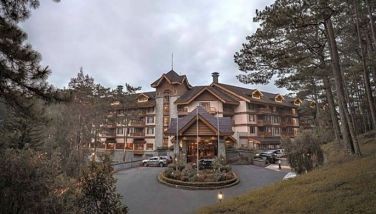BCDA to take new foreign partner for SCAD project

February 24, 2003 | 12:00am
The Bases Conversion Development Authority (BCDA) is taking a new foreign investor for its Subic Clark Alliance Development (SCAD) project.
This was revealed over the weekend by BCDA president and chief executive officer Rufo Colayco who said the new investor would be offered up to 55 percent of the SCAD project, while the BCDA, the Clark Development Corp. (CDC) and the Subic Bay Metropolitan Authority (SBMA) will have equal shares from the remaining 45 percent.
The major assets of the SCAD include the Subic Port, the Clark Airport and the Subic-Clark Expressway.
According to Colayco, the BCDA would entertain and negotiate with interested investors. There would be no public bidding as the joint venture would be tailored after the Fort Bonifacio Development Corporation.
The new investor, Colayco said, would be merely replacing the Philippine government in the SCAD project. However, Colayco said there is a difference in the SCAD venture because there is real estate involved.
Government, Colayco said, is prepared to extend a 75-year lease to the foreign partners. Under the Philippine Constitution, land ownership is still not allowed for foreigners.
If there is any restriction on land ownership, a separate corporate entity will be spun off to hold the real estate assets of the SCAD, he added.
The BCDA, Colayco said, is having the assets assessed for proper valuation and securing the necessary titles to the various real estate assets.
The BCDA has set a timetable of 24 months to get a foreign partner in the SCAD project which, according to Colayco will "lead the turnaround of the entire country."
Colayco pointed out further that "since we cannot develop the country in one shot, we have to focus our resources by developing a project that has the biggest bang for the buck."
Colayco said "Central Luzon is the most logical place to build a catalyst project."
In fact, Colaycosaid "we expect Central Luzon to duplicate the success of CALABARZON."
He said the "advantage of merging Subic and Clark is to save on project development."
For example, Colayco elaborated, "in Subic, instead of reclaiming land for an airport, it would just be used as a port and for an extended container yard, while using Clark for the airport."
The SCAD, Colayco stressed, "offers the most ideal way to develop Central Luzon and attract investors since it would be devoid of politicians’ interference which is the biggest fear of investors."
This was revealed over the weekend by BCDA president and chief executive officer Rufo Colayco who said the new investor would be offered up to 55 percent of the SCAD project, while the BCDA, the Clark Development Corp. (CDC) and the Subic Bay Metropolitan Authority (SBMA) will have equal shares from the remaining 45 percent.
The major assets of the SCAD include the Subic Port, the Clark Airport and the Subic-Clark Expressway.
According to Colayco, the BCDA would entertain and negotiate with interested investors. There would be no public bidding as the joint venture would be tailored after the Fort Bonifacio Development Corporation.
The new investor, Colayco said, would be merely replacing the Philippine government in the SCAD project. However, Colayco said there is a difference in the SCAD venture because there is real estate involved.
Government, Colayco said, is prepared to extend a 75-year lease to the foreign partners. Under the Philippine Constitution, land ownership is still not allowed for foreigners.
If there is any restriction on land ownership, a separate corporate entity will be spun off to hold the real estate assets of the SCAD, he added.
The BCDA, Colayco said, is having the assets assessed for proper valuation and securing the necessary titles to the various real estate assets.
The BCDA has set a timetable of 24 months to get a foreign partner in the SCAD project which, according to Colayco will "lead the turnaround of the entire country."
Colayco pointed out further that "since we cannot develop the country in one shot, we have to focus our resources by developing a project that has the biggest bang for the buck."
Colayco said "Central Luzon is the most logical place to build a catalyst project."
In fact, Colaycosaid "we expect Central Luzon to duplicate the success of CALABARZON."
He said the "advantage of merging Subic and Clark is to save on project development."
For example, Colayco elaborated, "in Subic, instead of reclaiming land for an airport, it would just be used as a port and for an extended container yard, while using Clark for the airport."
The SCAD, Colayco stressed, "offers the most ideal way to develop Central Luzon and attract investors since it would be devoid of politicians’ interference which is the biggest fear of investors."
BrandSpace Articles
<
>
- Latest
- Trending
Trending
Latest
Trending
Latest
Recommended






























